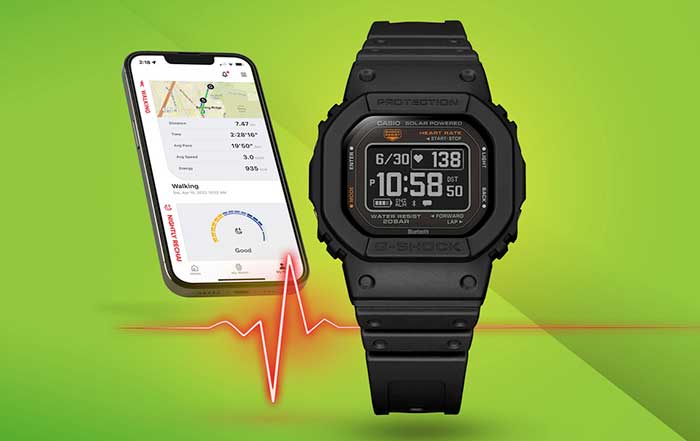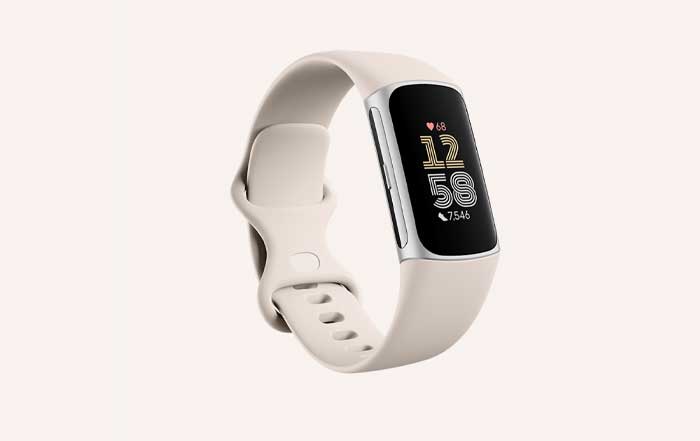In the fitness industry, franchising has become a vital avenue for expanding brand reach and ensuring sustained business growth. With increasing global awareness of health and fitness, gym-goers, fitness enthusiasts, and those embarking on wellness journeys are more willing to invest in fitness memberships, personalized training, and innovative workout regimens. The fitness franchise model presents an opportunity for aspiring business owners to tap into this expanding market while benefiting from established brand recognition, corporate support, and a proven business model. Below, we explore the top fitness franchises around the globe and provide comprehensive insights into how to effectively manage a fitness franchise for long-term success.
Top Fitness Franchises Globally
Planet Fitness stands out as one of the largest and most recognizable fitness franchises worldwide. Founded in 1992, the company has revolutionized the fitness industry with its no-judgment approach, catering to individuals who may be intimidated by traditional gym environments. With over 2,300 locations across the United States, Canada, and other regions, Planet Fitness targets casual gym-goers with its affordable membership fees and judgment-free zones, making fitness accessible to people of all backgrounds.
The franchise thrives on a business model that emphasizes inclusivity, simplicity, and affordability, offering members access to essential fitness equipment and a welcoming environment. Franchisees benefit from robust corporate support, including marketing, operations guidance, and bulk purchasing power, ensuring they can maintain cost efficiencies and offer affordable memberships to a broad customer base.
Anytime Fitness is another global powerhouse in the fitness franchise arena, boasting over 4,000 locations across 50 countries. Founded in 2002, the franchise distinguishes itself with its 24/7 access model, allowing members the flexibility to work out whenever it suits their schedule. The key to the brand’s global success lies in its adaptability to different market conditions and its focus on creating a personalized fitness experience for its members.
Franchisees who join the Anytime Fitness network benefit from the franchise’s strong global presence and its ability to cater to diverse demographics. The brand also offers a comprehensive support system that includes site selection, marketing, operational training, and technology infrastructure. This makes it easier for franchise owners to focus on managing their local community while aligning with the brand’s global mission.
Orangetheory Fitness has taken the fitness world by storm with its unique science-backed workout regimen that focuses on heart rate-based interval training. Launched in 2010, the franchise has grown rapidly, with more than 1,400 locations in over 25 countries. The brand's success stems from its combination of high-energy group workouts, personalized fitness tracking, and a community-driven atmosphere that keeps members engaged and motivated.
Orangetheory's franchisees benefit from a dynamic business model that emphasizes innovation and results-oriented fitness. The brand provides substantial support, including marketing strategies, cutting-edge fitness technology, and ongoing training, ensuring that franchise owners can offer a consistent and effective workout experience. As the demand for boutique fitness continues to rise, Orangetheory's innovative approach has positioned it as a leader in the industry.
4. Gold’s Gym
Gold’s Gym is a legendary name in the fitness world, known for its association with bodybuilding and strength training. Founded in 1965, the franchise now operates over 700 locations worldwide. While traditionally focused on serious weightlifting, Gold’s Gym has evolved to offer a broader range of services, including personal training, group classes, and functional fitness programs to appeal to a wider audience.
Franchisees of Gold’s Gym benefit from the brand’s longstanding reputation and global reach. The franchise offers comprehensive training, marketing support, and guidance on facility design, ensuring that each location delivers the iconic Gold’s Gym experience. The company’s emphasis on both fitness and community engagement helps build long-term loyalty among members, further solidifying its place in the industry.
5. F45 Training
F45 Training, founded in 2012 in Australia, has experienced explosive growth, expanding to over 1,750 locations in more than 45 countries. The brand's success is driven by its innovative and efficient 45-minute workout sessions, which combine functional training, high-intensity interval training (HIIT), and circuit-based exercises. F45's workouts are designed to cater to people of all fitness levels, with an emphasis on group training and community engagement.
The franchise's business model is highly scalable, and franchisees benefit from a lean operational setup, requiring minimal staff and equipment. F45 provides extensive support in terms of site selection, marketing, technology, and fitness programming, making it an attractive option for entrepreneurs looking to enter the fitness industry. Its ability to adapt and evolve with fitness trends ensures that F45 remains a top contender in the fitness franchise world.
6. Snap Fitness
Snap Fitness is another prominent player in the fitness franchise space, offering members 24/7 access to fitness facilities. With over 2,000 locations across multiple countries, the franchise appeals to individuals seeking convenience, flexibility, and affordability. Snap Fitness stands out with its focus on creating smaller, community-based gyms that provide a personalized experience for members without the large footprint of bigger fitness centers.
Franchisees are supported through comprehensive operational training, marketing, and fitness programming, allowing them to create a sustainable business model. Snap Fitness also leverages technology, providing members with mobile apps for workout tracking and virtual training, further enhancing the value proposition for franchisees and their customers.
7. Jazzercise
As one of the oldest fitness franchises, Jazzercise has remained relevant by constantly evolving its offerings to meet the changing demands of the fitness industry. Founded in 1969, Jazzercise is known for its dance-based workout programs that combine cardio, strength training, and dance choreography. With over 8,000 franchisees globally, Jazzercise offers a fun, community-driven approach to fitness.
Franchisees of Jazzercise benefit from a well-established business model that has been proven successful over decades. The franchise provides training, choreography updates, and marketing support to ensure that each location can deliver a consistent and engaging workout experience. The focus on group fitness and community participation helps franchisees build a loyal member base while promoting a positive and energetic fitness culture.
Fitness Franchise Quiz
How to Manage a Fitness Franchise
Managing a fitness franchise requires a balance of business acumen, operational efficiency, and a passion for fitness. While owning a fitness franchise offers the advantage of working with an established brand and proven business model, success is not guaranteed without effective management. Below are key strategies to effectively manage a fitness franchise for long-term growth and profitability.
1. Understanding the Brand and Adhering to Corporate Standards
The first step in successfully managing a fitness franchise is understanding the brand’s core values, mission, and service standards. Franchisees are custodians of the brand and must ensure that their location upholds the same values and delivers a consistent experience to customers. Corporate franchises provide detailed guidelines on operational procedures, customer service protocols, facility layout, and marketing initiatives. Adhering to these standards is crucial for maintaining brand integrity and ensuring that members receive a consistent fitness experience, whether they are in a gym in New York or Tokyo.
Franchisees should make an effort to immerse themselves in corporate training programs and utilize available resources to fully understand the brand’s goals and expectations. Developing a strong relationship with corporate representatives can also help franchisees gain insights into best practices and upcoming brand initiatives, positioning them for success.
2. Focus on Customer Experience
The fitness industry is highly competitive, and member retention is critical to the long-term success of a fitness franchise. Franchisees must prioritize customer satisfaction by creating a welcoming, inclusive environment where members feel valued and supported. This involves not only offering high-quality fitness services but also focusing on the overall experience members have from the moment they enter the gym to the time they leave.
Creating a sense of community is vital in fitness franchises, where members often seek more than just physical exercise—they want to be part of a group that shares similar goals and interests. Franchisees can achieve this by hosting community events, fitness challenges, and member appreciation days. Offering personalized fitness plans, monitoring members' progress, and providing excellent customer service will further help build strong relationships with clients, leading to higher retention rates.
3. Effective Staff Management
The staff is the backbone of any fitness franchise, and their performance can make or break the business. Franchisees must invest time in hiring the right employees—those who are passionate about fitness, have strong interpersonal skills, and are committed to providing an excellent customer experience. Whether it’s personal trainers, front desk staff, or cleaning personnel, each team member should be aligned with the franchise’s mission and values.
Once the right team is in place, ongoing training and development are critical. Many fitness franchises offer corporate training programs for franchisees and their staff, covering areas such as fitness programming, customer service, and sales techniques. Franchisees should encourage their employees to take advantage of these resources, as continuous professional development will lead to higher employee satisfaction, better service delivery, and improved member retention.
4. Operational Efficiency and Financial Management
Managing the day-to-day operations of a fitness franchise involves a wide range of responsibilities, from ensuring equipment is well-maintained to overseeing member billing and payroll. Operational efficiency is key to running a successful fitness franchise, and franchisees should prioritize streamlined processes that reduce downtime and maximize productivity.
Financial management is another critical aspect of running a fitness franchise. Franchisees must have a strong grasp of their financial statements, including profit and loss statements, cash flow, and budgets. Tracking key performance indicators (KPIs), such as membership growth, retention rates, and revenue per member, will help franchise owners identify areas for improvement and make data-driven decisions to improve profitability.
5. Marketing and Member Acquisition
Effective marketing is essential for growing a fitness franchise, especially in a crowded market. Franchisees should leverage both corporate marketing resources and local marketing strategies to attract new members. Corporate franchises often provide marketing materials, digital assets, and promotional campaigns that can be customized for local markets, making it easier for franchisees to implement consistent and effective marketing efforts.
Local marketing strategies may include partnerships with nearby businesses, participation in community events, and social media engagement. Hosting open houses, offering free trial memberships, or launching referral programs can also help generate new leads and increase membership sign-ups. In today’s digital age, an active social media presence is crucial for brand visibility and member engagement, and franchisees should dedicate resources to maintaining an engaging online presence.
6. Adapting to Industry Trends
The fitness industry is constantly evolving, with new trends, technologies, and workout programs emerging regularly. Franchisees must stay informed about industry developments to keep their franchise competitive and relevant. Offering the latest fitness programs, incorporating wearable fitness technology, and providing virtual workout options are examples of how franchisees can adapt to changing consumer demands.
Additionally, many fitness franchises are embracing wellness trends, offering holistic services such as nutrition coaching, mindfulness classes, and recovery programs. Diversifying the services offered can help franchisees attract a broader customer base and increase revenue streams.
7. Community Involvement and Corporate Social Responsibility
Community involvement can significantly enhance a fitness franchise’s reputation and foster a sense of loyalty among members. Franchisees should look for opportunities to give back to their community, whether through charity events, fitness fundraisers, or partnerships with local organizations. Building a strong community presence not only strengthens member relationships but also enhances brand visibility and trust.
Corporate social responsibility (CSR) is another avenue franchisees can explore to align their business with meaningful causes. Fitness franchises that prioritize CSR initiatives, such as promoting sustainable practices or supporting health and wellness programs for underserved populations, can differentiate themselves from competitors and attract socially conscious consumers.
Conclusion
Owning and managing a fitness franchise is a rewarding but challenging endeavor. With the global demand for fitness and wellness continuing to rise, franchisees who are dedicated to providing an exceptional member experience, managing their operations efficiently, and staying ahead of industry trends will thrive in this competitive market. The key to success lies in leveraging the support and resources provided by the corporate franchise while implementing localized strategies that resonate with the community and promote long-term growth.








